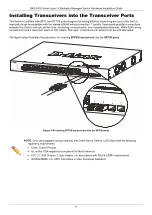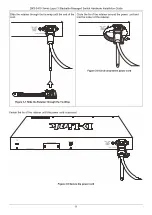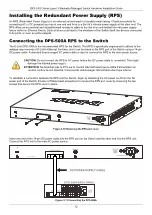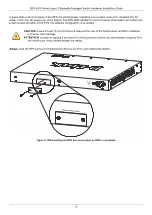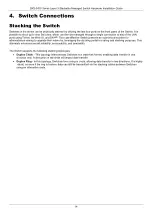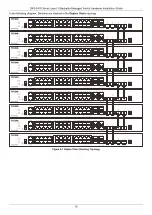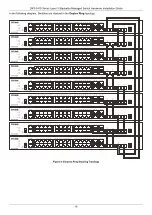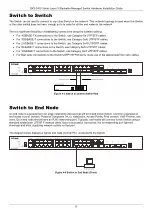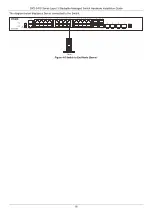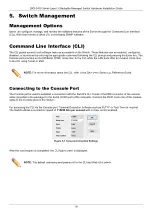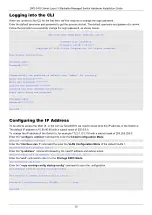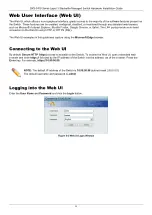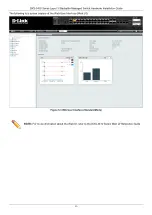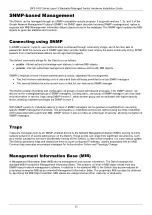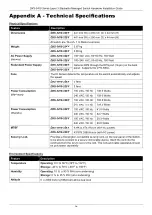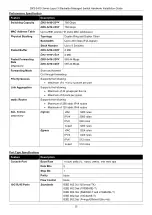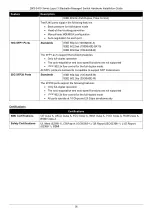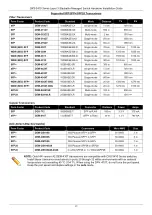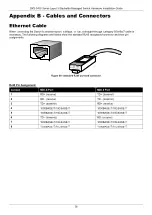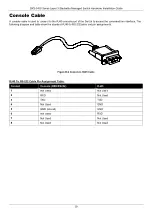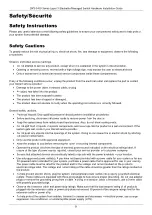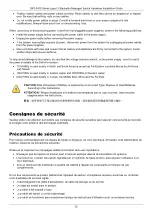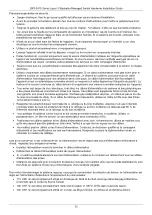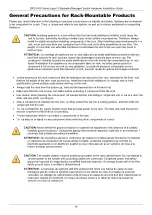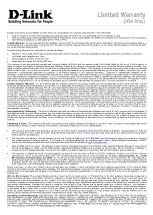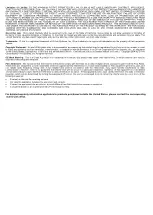
DXS-3410 Series
Layer 3 Stackable Managed Switch
Hardware Installation Guide
23
SNMP-based Management
The Switch can be managed through an SNMP-compatible console program. It supports versions 1, 2c, and 3 of the
Simple Network Management Protocol (SNMP). An SNMP agent decodes incoming SNMP messages and replies to
requests with MIB (Management Information Base) objects stored in the database. The SNMP agent updates the MIB
objects to generate statistics and counters.
Connecting using SNMP
In SNMP versions 1 and 2c, user authentication is achieved through
community strings
, which function akin to
passwords. Both the remote user's SNMP application and the Switch must employ the same community string. SNMP
packets from unauthenticated stations are disregarded (dropped).
The default community strings for the Switch are as follows:
public
- Allows authorized management stations to retrieve MIB objects.
private
- Permits authorized management stations to retrieve and modify MIB objects.
SNMPv3 employs a more intricate authentication process, separated into two segments.
The first involves maintaining a list of users and their attributes permitted to act as SNMP managers.
The second defines the actions each user on that list can take as an SNMP manager.
The Switch enables the listing and configuration of groups of users with shared privileges. This SNMP version can
also be set for a designated group of SNMP managers. Consequently, one group of SNMP managers can view read-
only information or receive traps using SNMP version 1, while another group can be endowed with higher security
levels, entailing read/write privileges via SNMP version 3.
With SNMP version 3, individual users or groups of SNMP managers can be granted or restricted from executing
specific SNMP management functions. The permissible or restricted functions are defined using the Object Identifier
(OID) associated with a particular MIB. SNMP version 3 also provides an extra layer of security, allowing encryption of
SNMP messages.
Traps
Traps are messages sent by an SNMP-enabled device to the Network Management Station (NMS), serving to notify
network personnel of events taking place on the Switch. These events can range from significant occurrences, such
as a reboot (caused by someone accidentally turning off the Switch), to less critical changes, like a port status update.
The Switch generates traps and dispatches them to a pre-configured IP address, usually associated with an NMS.
Common trap examples encompass messages for Authentication Failure and Topology Change.
Management Information Base (MIB)
A Management Information Base (MIB) stores management and counter information. The Switch employs the
standard MIB-II module for Management Information Base. This enables retrieval of MIB object values from any
SNMP-based network management software. In addition to the standard MIB-II, the Switch also accommodates its
proprietary enterprise MIB as an extended Management Information Base. The proprietary MIB can also be obtained
by specifying the MIB Object Identifier. MIB values are categorized as either read-only or read-write.
Содержание DXS-3410 Series
Страница 1: ...Version 1 00 2023 12 18...
Страница 54: ......

